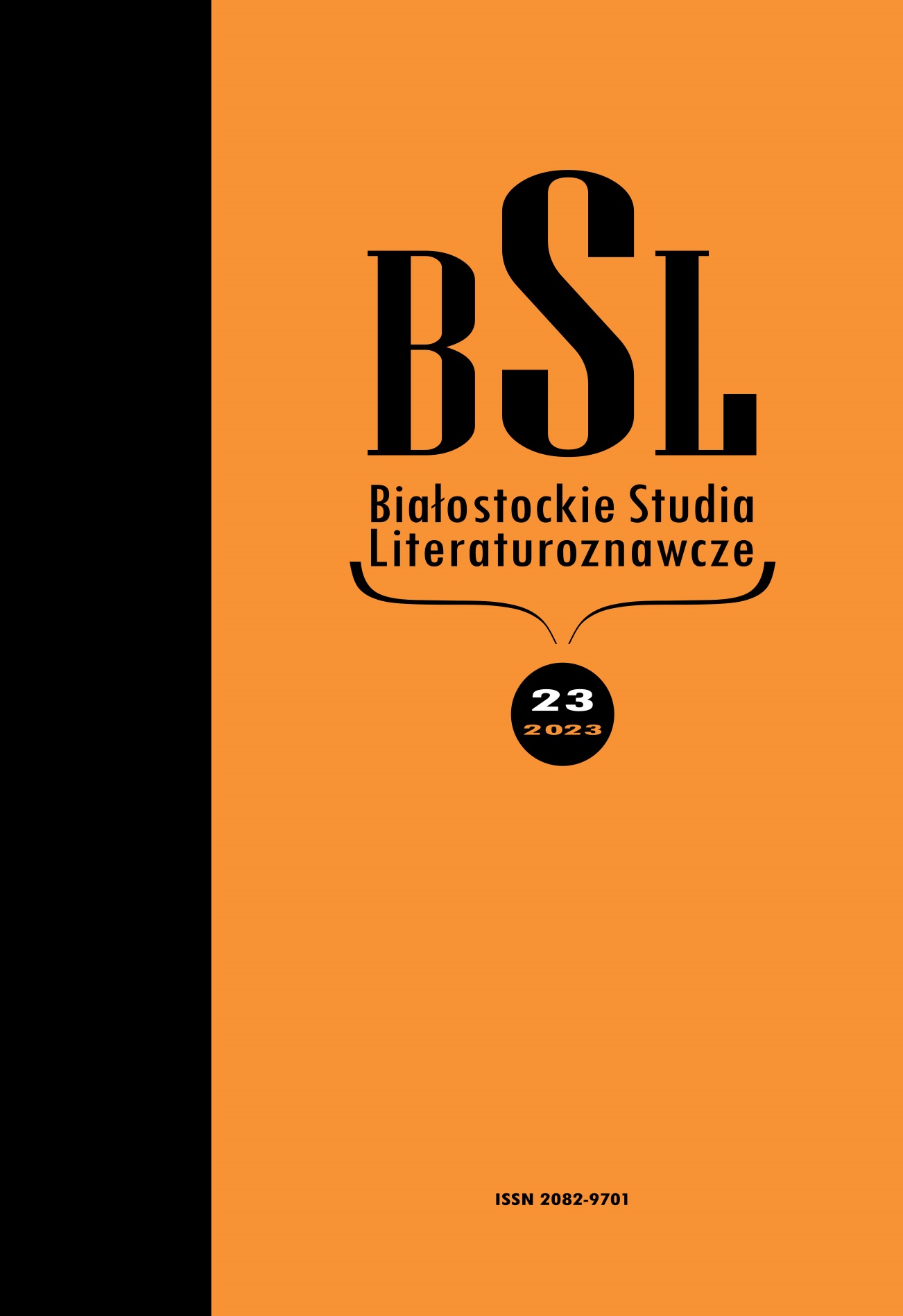Mein Gott, jak pięknie: Filip Springer’s Wanderings Through the Historical Landscape
Elżbieta Konończuk
Faculty of Philology. University of Bialystokhttps://orcid.org/0000-0002-9544-6595
Abstract
The aim of this article is to interpret Filip Springer's fictionalized historical reportage Mein Gott, jak pięknie [My God, so beautiful]. In the work, which is a record of a journey through the so-called Regained Territories in search of traces of historical landscapes, Springer presents the engineering and architectural interventions in the landscape of the eastern Prussian provinces. On the basis of numerous historical sources, he builds fictionalised narratives about the regulation of the Oder River in the 18th century, the construction of the Eastern Railway linking Berlin and Königsberg, the creation of palace and garden complexes, the modelling of Lower Silesian landscapes in the fashion of an idyllic wonderland, dubbed the ‘Silesian Elysium’, and the art of inscribing the architecture of East Prussian towns into the local landscape. The author reads Springer's book as an argument on the art of human-arranged space that turns the landscape into a carrier of aesthetic values and enables the experience of beauty.
Keywords:
landscape, historical reportage, geohistory, Prussia, archiectureReferences
Barcz Anna (2017), Odra – rzeka ekoparadygmatyczna, „Poznańskie Studia Polonistyczne”, nr 30, s. 221–235.
Barcz Anna (2017), O rzece, która wylewa. Literatura i nowa pamięć o powodzi, w: Nowa humanistyka. Zajmowanie pozycji, negocjowanie autonomii, red. P. Czapliński, R. Nycz, Warszawa: Instytut Badań Literackich Polskiej Akademii Nauk.
Borcz Zuzanna (2001), Architektura krajobrazu jako kierunek studiów, „Architektura Krajobrazu”, nr 1, s. 60-63.
Jochemczyk Mariusz (2013), Super flumina Silesiae Superioris, w: Urzeczenie. Lokacje literatury i wyobraźni, red. M. Jochemczyk, M. Piotrowiak, Katowice: Wydawnictwo Uniwersytetu Śląskiego.
Popczyk Maria (2014), Krajobraz jako obraz, w: Krajobraz kulturowy, red. B. Frydryczak, M. Ciesielski, Poznań: Wydawnictwo Poznańskiego Towarzystwa Przyjaciół Nauk.
Springer Filip (2011), Miedzianka. Historia znikania, Wołowiec: Wydawnictwo Czarne.
Springer Filip (2012), Źle urodzone. Reportaże o architekturze PRL-u, Kraków: Karakter.
Springer Filip (2013), Wanna z kolumnadą. Reportaże o polskiej przestrzeni, Wołowiec: Wydawnictwo Czarne.
Springer Filip (2023), Mein Gott, jak pięknie, Kraków: Karakter.
Schlögel Karl (2009), W przestrzeni czas czytamy. O historii cywilizacji i geopolityce, przeł. I. Drozdowska, Ł. Musiał, Poznań: Wydawnictwo Poznańskie.
Szejnert Małgorzata (2007), Czarny ogród, Kraków: Społeczny Instytut Wydawniczy Znak.
Tomasik Wojciech (2007), Ikona nowoczesności. Kolej w literaturze polskiej, Wrocław: Wydawnictwo Uniwersytetu Wrocławskiego.
Tokarczuk Olga (2012), Odra, w: O. Tokarczuk, Moment niedźwiedzia, Warszawa: Wydawnictwo Krytyki Politycznej.
Toporow Władimir (1991), Petersburg i tekst petersburski literatury rosyjskiej: wprowadzenie do tematu, przeł B. Żyłko, „Pamiętnik Literacki”, nr 2, s. 247–273.
Zduniak-Wiktorowicz Małgorzata (2013), Podajemy komunikat o stanie Odry”... Nowa literatura polska znad rzeki, w: Urzeczenie. Lokacje literatury i wyobraźni, red. M. Jochemczyk, M. Piotrowiak, Katowice: Wydawnictwo Uniwersytetu Śląskiego.
Faculty of Philology. University of Bialystok https://orcid.org/0000-0002-9544-6595
License

This work is licensed under a Creative Commons Attribution-ShareAlike 4.0 International License.
Articles published on the platform of Białostockie Studia Literaturoznawcze are available under the license CC-BY-SA 4.0 (CC Attribution-ShareAlike 4.0).
All interested parties have access to the published articles under the following conditions:
1.They must acknowledge authorship, which means crediting the author, title, source, together with the disseminated work (including the hyperlinks to the original work and doi) as well as the same license under the same conditions.
2. Derivative works can be distributed only under the same license as the original work.
The University of Białystok retains the right to the entire journal (layout, graphic design, title, cover design, logo, etc.).
The author retains the property right but confers on the University of Białystok the right to use the work.



